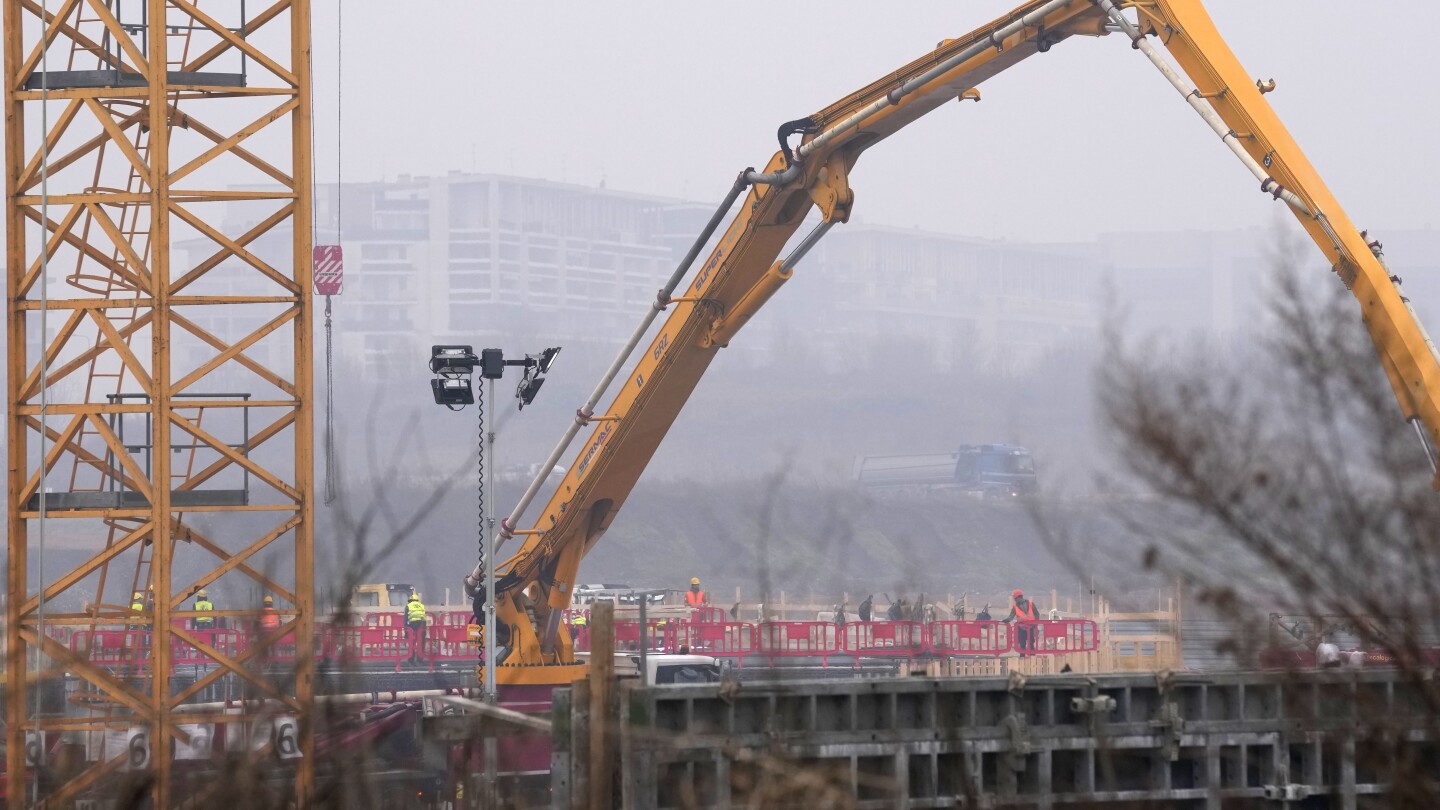CORTINA D’AMPEZZO, Italy (AP) — Construction on the much-debated bobsled track hasn’t even begun. Plans for the San Siro Stadium, where the opening ceremony is slated to be held, remain unclear.
And an all-new 15,000-seat hockey arena that’s supposed to welcome back NHL players to the Olympics for the first time in more than a decade is a giant construction pit.
The 2026 Milan-Cortina Olympics start exactly two years from Tuesday and it still seems like there are more questions than answers for a complicated games that will be staged across a large swath of northern Italy spread over five different venue clusters.
“The Olympics don’t come every two years, they’re coming in 2026 and then they won’t come again, and I’m beginning to regret backing it, because I feel the responsibility,” Economy Minister Giancarlo Giorgetti said last week.
“A lot of years have passed between 2018 and 2024,” Giorgetti said, referring to when the bidding process began six years ago.
Giorgetti was speaking at a meeting in the Valtellina valley that is home to Bormio, where men’s skiing is slated to be held. He added that an electronic sign should be placed “at the entrance to the Valtellina that shows how many days are left to make us understand the necessary urgency.”
Giorgetti later said he wasn’t being completely serious but was rather just trying to motivate the local authorities.
Because it’s clear that the organizers are far behind schedule for one of the first games to fully embrace cost-cutting reforms installed by International Olympic Committee President Thomas Bach and use mostly existing venues.
That means that Alpine skiing will be held at longtime World Cup venues in Cortina (for the women) and Bormio (men); Nordic events and biathlon will be held in Val di Fiemme and Anterselva, respectively, at arenas that have hosted multiple world championships.
The biggest new facilities being built are the ice hockey arena and the Olympic Village in Milan.
Plus the sliding center.
SLIDING DEBATE
The local organizing committee’s decision to rebuild the century-old track in Cortina has been met with fierce opposition by the IOC, which wants a currently functioning track in Austria or Switzerland used instead.
But the Italian government does not want to pay for a foreign venue and organizers have signed a contract to rebuild the Cortina track for 81.6 million euros ($88 million). Work is slated to start on Feb 19. That’s a year before IOC-mandated test events.
No sliding track has been built recently in such a short timeframe and organizers are continuing negotiations for an eventual Plan B — likely in a neighboring country.
“There’s nothing more to discuss,” Cortina Mayor Gianluca Lorenzi said. “The contractor is one of the best in Italy and they have provided guarantees for the required timeframe, so it’s an image-issue for them, too. The Olympics will take place on the Cortina track.”
VILLAGE QUESTIONS
Organizers are also moving forward with plans to build a temporary Olympic Village on Cortina’s outskirts for 1,400 athletes that would then be removed after the games, Lorenzi said.
But if the 12 medal events in sliding — comprising bobsled, luge and skeleton — are moved elsewhere, that would leave only Alpine skiing and curling in Cortina and it might not make sense anymore to build a village.
“We don’t have any more time to lose,” said Stefano Longo, president of the Fondazione Cortina, which is responsible for organizing the events in the Dolomites resort. “We lost two years to the pandemic and now we need to take some risks.”
Construction is moving along steadily at an even bigger Olympic Village in Milan.
SAN SIRO
At one point, the opening ceremony for 2026 was supposed to be the final event for the 80,000-seat San Siro while new stadiums were built for Milan’s two soccer teams, AC Milan and Inter Milan.
But now both teams’ stadium plans are stalled and the city, which runs the San Siro, has proposed adding a fourth tier and renovating the existing facility. How that plan might align with the Olympics is unclear.
The closing ceremony is slated for Verona’s Arena, a large Roman amphitheater.
TRANSPORT HEADACHE
Specially dedicated Olympic transport systems will be available within each cluster but not between clusters.
“It will be quite a different system compared to what people are used to,” Milan-Cortina CEO Andrea Varnier said. “Public transport will provide for movements between one cluster and another and we recently reached an agreement with the Ferrovie dello Stato (Italian rail service) to make that work better.”
So can a foreign spectator land in Milan, watch some figure skating and then move on to Cortina for women’s skiing or Livigno for snowboarding and freestyle skiing?
“Sure,” Varnier said. “There will be all sorts of different packages available. … And we’re keeping in mind that being in Italy people will want to do other things, too. A lot of people will want to do more than just see the competitions.”
Ticket sales will likely begin in September or October of this year.
1956 LEGACY
Cortina will show off its legacy from hosting the 1956 Olympics.
The ski jump from that year — which now looks miniature compared to the ones used today — will be restored and turned into an open-air museum that can be visited during the games.
The wooden ice arena that was used in 1956 is also to be restored and will host curling. The arena — and Cortina in general — was also where scenes took place in “For Your Eyes Only,” the 1981 James Bond film starring Roger Moore.
___
AP coverage of the Paris Olympics: https://apnews.com/hub/2024-paris-olympic-games

